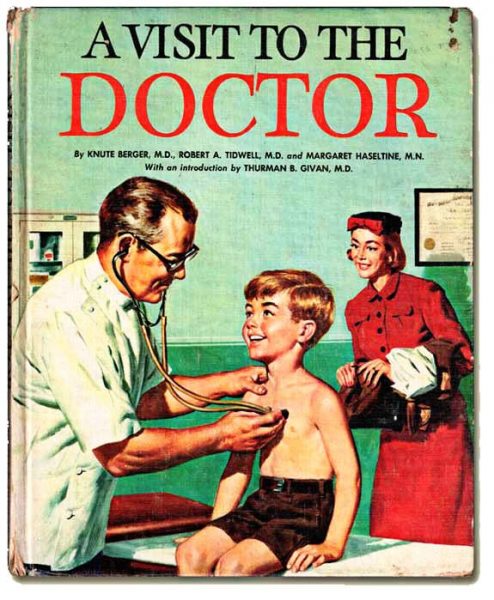Why Are There NO Good Gunsmiths Around Here?

Diplock’s Syndrome

For those of you who have not read Fred Zeglin's book on Wildcat Cartridges,
here is a little excerpt you might find amusing.
"Diplock’s Syndrome," a syndrome contracted by gunsmiths. The cause is close contact with clients or customers who lack patience, and often what we used to call common courtesy. Custom guns are hand made and require a great many hours of work and attention from a highly trained professional. Researchers have found that even the most patient and easy going gunsmith will loose his sense of humor and become an old curmudgeon as a result of contracting Diplock's Syndrome. Contributing factors appear to be phone calls, faxes, letters, and emails asking, "Can you give me an update?" or "How is my project coming along?" The reason such simple questions inflict and once fully contracted inflame a case of "Diplock's Syndrome" seems to be that each client thinks he is the only one making that inquiry when in reality he is among many. To exacerbate this the clients often have a bad case of ego-centrism, meaning: They think they are the center of the universe and we are all here to serve them.If you would like to spare your gunsmith the crippling effects of "Diplock's Syndrome" the best thing you can do as a client is remember that gunsmiths do not make a living by storing guns. They perform custom services that require time. Remember that delivery times are estimated. Patience will help you to receive the best possible quality of work, and your gunsmith will be much more pleasant to deal with.
In an article by Samuel Clark Jr. originally published in “Twenty-two Caliber Varmint Rifles” by Charles Landis, 1945, Clark tells a story about shooting accurate rifles and the good natured jabbing and poking that will inevitably erupt among shooting buddies. Here is an excerpt:
“The writer (Clark) had often remarked how frequently it is that we read of rifles capable of shooting into a minute of angle or how often we hear of ¾” or even ½” groups shot from rest or a machine rest at 100 yards, or 2” or less than 2” groups at 200 yards. It has also been frequently noted that although shooting, as just described, causes no great stir among the shooting fraternity, nevertheless, such shooting even in the hands of well-known experimenters, equipped with the most accurate rifles obtainable, has not been the rule on the range described above—in fact far from it—actually, quite the contrary, and if all groups fired by each individual shooter were averaged, the result would indicate the progress along the lines of accuracy was a very dubious matter indeed.
Among visitors to the range who had not neglected to observe this point, was Clark’s good friend and genial shooting companion, John Diplock. In fact, Diplock had so often been disappointed when rifles which were described as tack drivers failed to shoot in the vicinity of the tack, let alone shooting group after group measuring 1” or under, that he had lost a great deal of faith in the expressed opinions of his fellow man.
Another illusion, which Diplock had learned to discount about 99%, was that of the dependence that could be placed in the 5-shot groups as a test of accuracy. The whole matter had been discussed from all possible angles and the opinion was firmly held that a group of 10 shots fired from any rifle from bench or machine rest at 100 yards, which measured 1” from center to center of bullet holes farthest apart, was still a mighty fine group, and despite claims to the contrary, that the rifle and rifleman, who could sit down and do such shooting when the chips were down, with spectators present, and continue to do it for 10 shot group after 10 shot group, just had not come along yet.
Diplock, sensing an opportunity to turn the weekend into a payday, pounded his fist on the loading bench and stated that he had listened to all this 1” talk he wanted to, and he had seen all the selected groups he wanted to see, but what he did want to see was a shooter who was man enough to demonstrate before witnesses and with money on the board, what he could do about this 1” business… Peeling a big bill off his roll, Diplock laid it on the loading bench and announced that he had “had his say.””
Why repeat all this here? Extreme cases of Diplock's Syndrome will result in Customers getting fired by the gunsmith and in the very worst cases early retirement of a good gunsmith will result. The better the gunsmith, the more likely he will contract the syndrome as he talks to more clients. For decades gunsmith’s have had the reputation of being grumpy, opinionated, old duffers. It is the author’s contention that the story above is a good explanation for the attitudes displayed by many long time gunsmiths. Professional gunsmiths are forced to endure amazing tales of accuracy, and hunting prowess, most of which no 5 year old would believe. After years of exposure to such comments, stories, statements, anecdotes, yarns, legends, and/or outright lies even the kindest heart will become hardened to these tales. Naturally when you tell the gunsmith, "I'm in no hurry." and then call the next day to see how the project is going you inflame his condition. This hardened condition the author has dubbed "Diplock’s Syndrome". By the way, Diplock lost his bet… nobody is perfect. FDZ

Is there a Dr. in the House?







